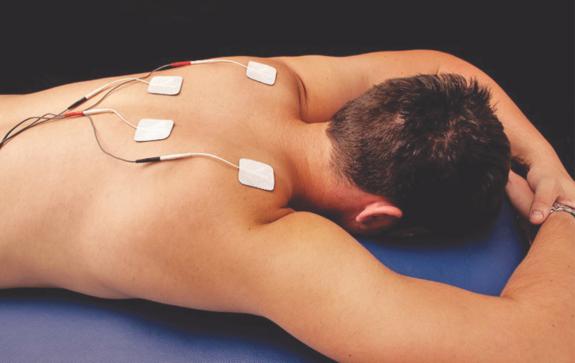-
Mon - Sat
08:00am - 08:00pm

In addition to therapeutic exercise, manual therapy and other common treatment methods, rehabilitation specialists use a variety of modalities to reduce pain, facilitate healing and restore function.
The ultimate goal of rehabilitation is to return the injured participant to activity, pain free and fully functional. The rehabilitation process must focus on controlling pain and inflammation, and regaining normal joint range of motion (ROM), flexibility, muscular strength, muscular endurance, coordination, and power. Therapeutic modalities are used to create an optimal environment for injury repair by limiting the inflammatory process and breaking the pain-spasm cycle. Use of any modality depends on the supervising physiotherapist’s exercise prescription, as well as the injury site, and type and severity of injury. An indication is a condition that could benefit from a specific modality, whereas a contraindication is a condition that could be adversely affected if a particular modality is used.
Electrotherapy treatment can include the use of modalities. A modality (treatment) is a therapeutic agent or method used to treat an injury, disability or disorder and to promote, maintain or restore a person’s physical and psychological wellbeing. Physiotherapy modalities include:

Ultrasound has been approved by the FDA for a wide variety of therapeutic uses, including fracture healing, thrombus dissolution, and the treatment of inflammation such as plantar fasciitis and epicondylitis. In most ultrasound applications, a hand-held transducer is moved in a circular motion over an injured area. The transducer produces sound waves too high-pitched for humans to hear, and those waves’ heat tendons, muscles and other tissues to improve blood flow and hasten the healing process.
Electrical stimulation, or E-stim, is the general term for several modalities that involve electrodes attached to a patient’s skin. These modalities can be used for both pain relief and functional improvements, even in cases involving neurological disorders. In fact, E-stim has proved effective in facilitating functional facial movements in patients with Bell’s palsy.
Commonly referred to as TENS, transcutaneous electrical nerve stimulation is a type of E-stim used to manage acute and chronic pain. Its various frequencies activate various pain receptors, sending non-painful stimuli through injured tissues and into the nervous system.
Dry heat has long been a go-to treatment for subacute and chronic injuries, as well as the alleviation of delayed onset muscle soreness (DOMS). Unlike ultrasound and other “deep heating” methods, dry heat only significantly affects skin, fat and other superficial tissues. Still, heat’s local effects are often enough to decrease pain, increase mobility and temporarily allow for pain-free movement.

Moist heat is another form of superficial heat therapy, and in most cases therapists will simply apply damp heat packs to injured areas. It works via the same mechanisms as dry heat, but several studies suggest that moist heat penetrates deeper and faster into injured tissues and facilitates more significant functional improvements.
Unlike heat, cold or ice therapy is used to reduce blood flow and inflammation during the acute phase of healing. It can also reduce or temporarily prevent swelling in an injured joint or muscle following exercise, making it a useful post-exercise modality. In many cases, PTs will first apply heat to help patients “warm up” and gain mobility for therapeutic exercise, and apply ice to reduce the inflammatory response afterwards.
Finally, light therapy involves the application of lasers, light-emitting diodes (LEDs) and other light sources to injured tissues. Different types of light work in slightly different ways, but in general, they all exert their effects on chromophores, light-absorbing molecules similar to chlorophyll in plant cells. Chromophores use the energy from absorbed light to produce more ATP, the cellular energy needed to synthesize enzymes, DNA, RNA and other materials critical to the repair process. Light therapies have been shown to be effective in a variety of applications, including the treatment of carpal tunnel syndrome, lower back pain and even wound healing.
Purpose of Electrotherapy or Modalities in Physiotherapy
A physiotherapist will assess a person and identify whether a presenting symptom may be alleviated or improved by the application of a modality.
The key purpose of modalities in physiotherapy is to assist in improving the person’s physical and psychological wellbeing through the use of therapeutic methods.
The use of therapeutic modalities may help to: